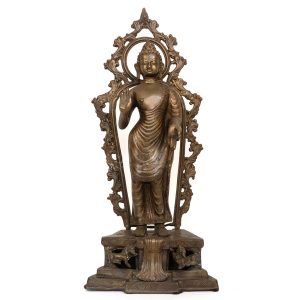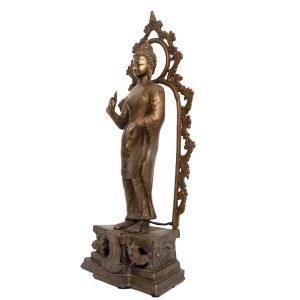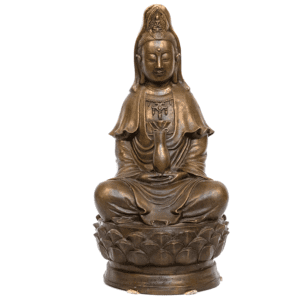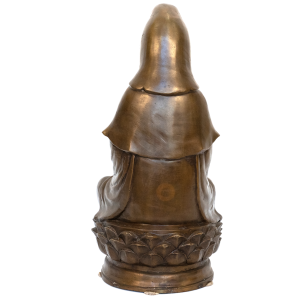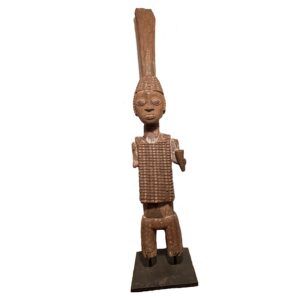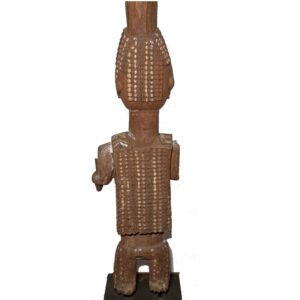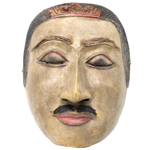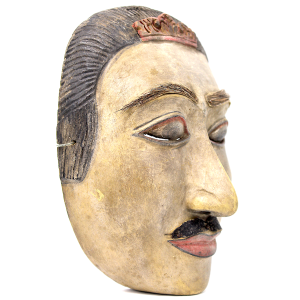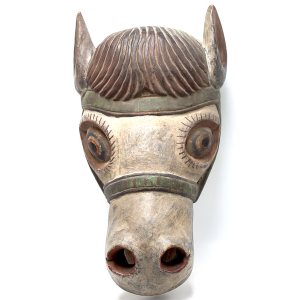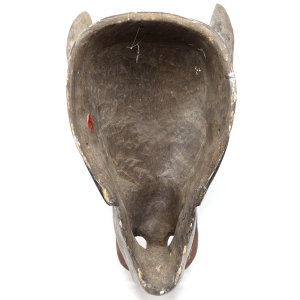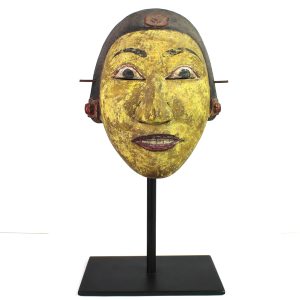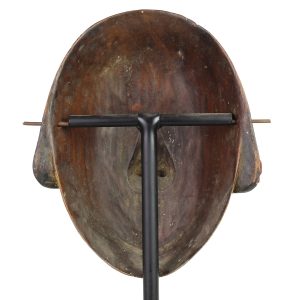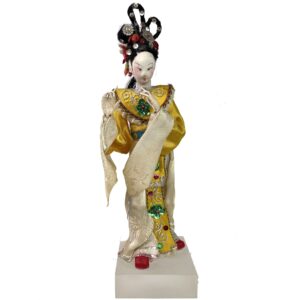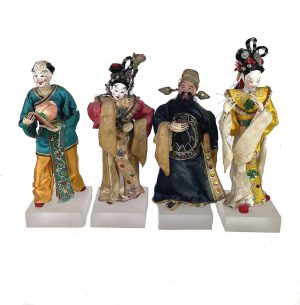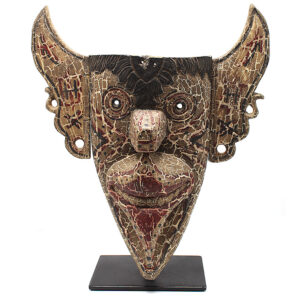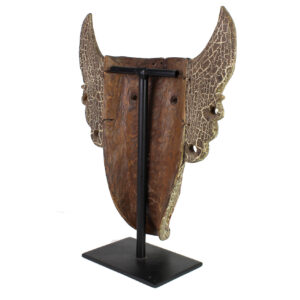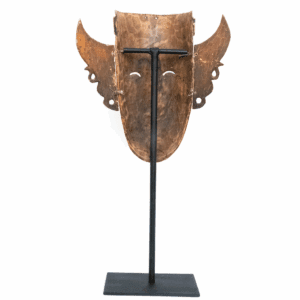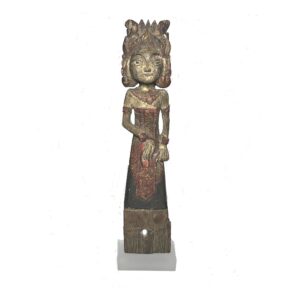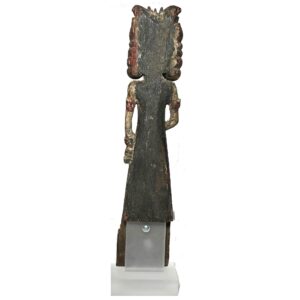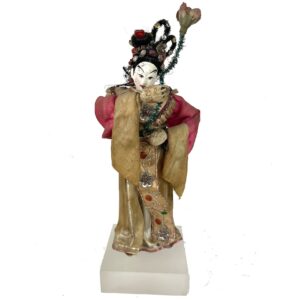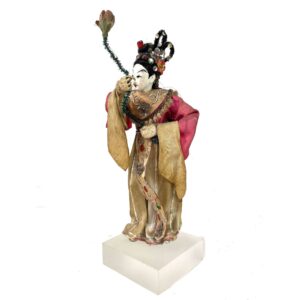Showing 157–168 of 200 results
-
Sale!


$895.00 Original price was: $895.00.$725.00Current price is: $725.00.
H: 22.5″ W: 11″ D: 6.5″ | CALL 213-568-3030 OR EMAIL [email protected] FOR SHIPPING
Vintage Nepali brass Buddha in teaching mudra standing on pedestal with 2 Buddhist lions, wearing “wet style” close fitting monk’s robes covering idealized body under drapery. Removable full body aureole with foliate designs.
-
Sale!


$595.00 Original price was: $595.00.$425.00Current price is: $425.00.
H: 19.5” W: 9.375” D: 9” | CALL 213-568-3030 or email [email protected] FOR SHIPPING
Vintage Thai cast bronze White Clad Guanyin in meditation on multi-tiered throne holding vial of precious dew with image of Buddha Amitabha under hood. Vision of compassionate serenity, half closed eyes and benevolent smile.
-
Sale!


$3,900.00 Original price was: $3,900.00.$2,950.00Current price is: $2,950.00.
On Stand: H: 61″ W: 12″ | D: 12″ CALL 213-568-3030 OR EMAIL [email protected] FOR SHIPPING.
Vintage wooden structural post Nigerian Yoruba warrior statue with a scale-pattern torso armor, elongated helmet, strong frontal posture and prominent expressive facial features symbolizing a warrior’s powers. Mounted on a black metal base.
-


$105.00
This Dalem is a traditional folk-art and ethnic mask (topeng) from Bali made from pulai wood of a Hindu king (Dalem). He stares directly at the viewer while his high cheeks help express his poise and the ability to remain cool in a crisis. This is a fine example of a gifted carver able to…
-
Sale!


$325.00 Original price was: $325.00.$210.00Current price is: $210.00.
H: 13.5″ W: 7.5″ D: 5″ | FREE SHIPPING WITHIN CONTINENTAL U.S.
Used in ritual Cham Dances, this whimsical and colorful mask emphasizes the horses playful character, alertness and strength with large eyes, painted lashes, wide raised lids, flaring nostrils, open mouth and pointed ears framed by beautifully carved rows of black hair.
-
Sale!


$675.00 Original price was: $675.00.$525.00Current price is: $525.00.
Ht: 15.5” W: 8” D: 5” | CALL 213-568-3030 OR EMAIL [email protected] FOR SHIPPING
Dayu mask of Balinese high-caste female Hindu Brahman, beautiful decorative piece on a museum quality metal stand.
-
Sale!


$195.00 Original price was: $195.00.$135.00Current price is: $135.00.
H: 10.5 ” W: 3.5 ” D: 3.125″ | FREE SHIPPING WITHIN CONTINENTAL U.S.
Charming Chinese Nuo Opera dancer wearing a costume with 5-petal plum blossoms symbolizing a wish for the Five Happinesses: prosperity, long life, health, a virtuous life and natural death.
-


$485.00
H: W: D: Ht: 14.75″ W:12.125″ | FREE SHIPPING WITHIN CONTINENTAL U.S.
-
Sale!


$1,050.00 Original price was: $1,050.00.$895.00Current price is: $895.00.
H: 23.375” W: 13 W: 6” | FOR SHIPPING INFORMATION CONTACT US AT 213-568-3030 or [email protected]
Vintage animistic Dayak ancestor mask for agricultural festivals, separate wing-like decoratively painted ears, long nose, gnarled teeth, featured in Green Goblin’s collection in 2002 Spiderman movie.
-
Sale!


$425.00 Original price was: $425.00.$395.00Current price is: $395.00.
Ht: 14.5” W: 3.5” D: 2.25” | FREE SHIPPING WITHIN CONTINENTAL U.S
Rare vintage carving dedicated to Dewi Sri, Balinese Goddess of Rice. was probably made for a home shrine or small rice field temple . Hole near the bottom indicates it may have been part of a larger decorative scheme.
-


$675.00
The religion of the ethnic Dayak (Dyak) people of Kalimantan (Borneo), Indonesia is a mix of animism, shamanism and ancestor worship. Their word hudoq describes three different things: it describes the pests that can destroy the rice harvest on which their survival depends; the name of the huge yearly Dyak planting celebration and the name…
-
Sale!


$195.00 Original price was: $195.00.$135.00Current price is: $135.00.
H: 8.75 ” W: 4 ” D:3.125 ” | FREE SHIPPING WITHIN CONTINENTAL U.S.
Chinese opera dancer doll with elaborate headdress and 5-petal plum blossom on sash symbolizing the Five Happinesses: prosperity, long life, health, living a virtuous life and dying a natural death.
End of content
End of content

